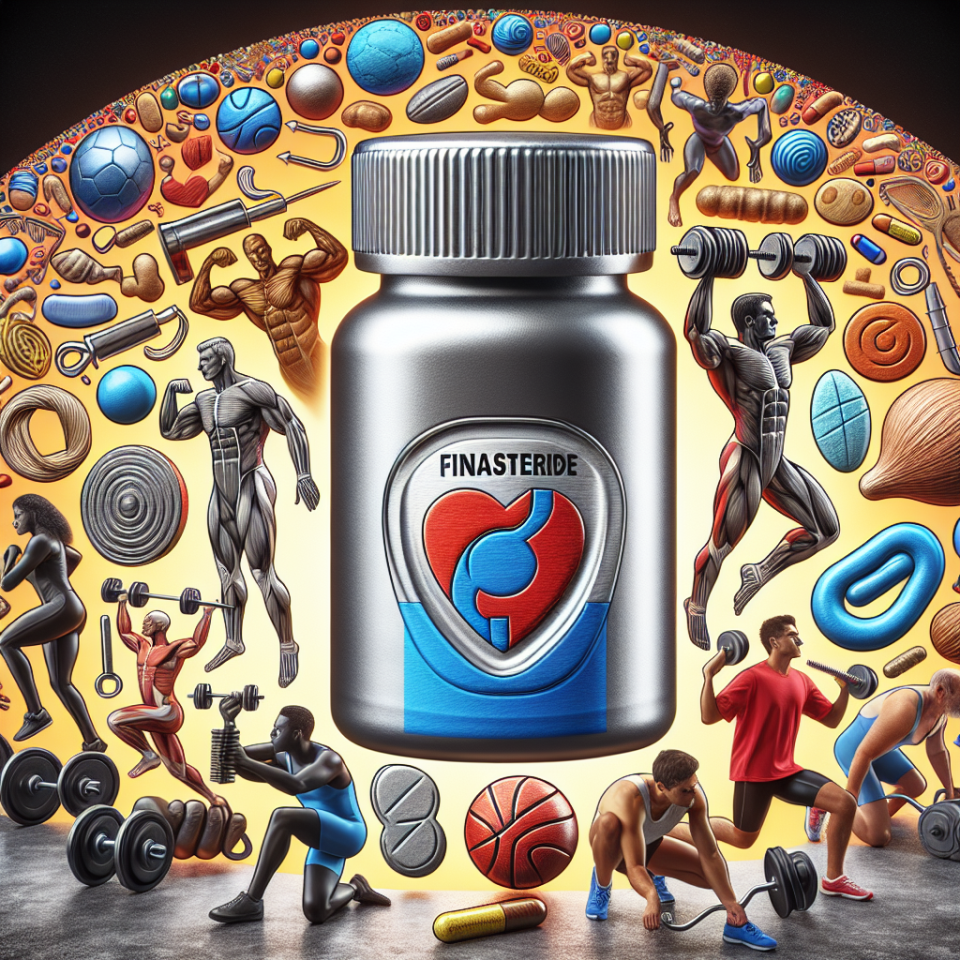-
Table of Contents
Finasteride as a Tool to Reduce Steroid Side Effects in Athletes
Steroid use in sports has been a controversial topic for decades. While these performance-enhancing drugs can provide athletes with a competitive edge, they also come with a host of potential side effects. From increased risk of heart disease to liver damage, the risks associated with steroid use cannot be ignored. However, there may be a solution to mitigate these risks – finasteride.
The Role of Finasteride in Sports Pharmacology
Finasteride is a medication primarily used to treat enlarged prostate and male pattern baldness. It works by inhibiting the conversion of testosterone to dihydrotestosterone (DHT), a more potent form of the hormone. This mechanism of action has made finasteride a popular choice for athletes looking to reduce the side effects of steroid use.
One of the most common side effects of steroid use is male pattern baldness. This is due to the increase in DHT levels, which can lead to hair loss in genetically predisposed individuals. By inhibiting the conversion of testosterone to DHT, finasteride can help prevent or slow down hair loss in athletes using steroids.
But the benefits of finasteride in sports pharmacology go beyond hair loss prevention. DHT is also responsible for the enlargement of the prostate, which can lead to urinary problems in men. By reducing DHT levels, finasteride can help alleviate these symptoms and improve overall prostate health.
Pharmacokinetics and Pharmacodynamics of Finasteride
Finasteride is well-absorbed after oral administration, with peak plasma concentrations reached within 2 hours. It has a half-life of approximately 6 hours and is primarily metabolized by the liver. The drug is excreted mainly in the urine, with a small amount excreted in the feces.
When it comes to pharmacodynamics, finasteride has a high affinity for the enzyme 5-alpha reductase, which is responsible for converting testosterone to DHT. By binding to this enzyme, finasteride effectively inhibits its activity, leading to a decrease in DHT levels. This reduction in DHT can have a significant impact on the side effects of steroid use in athletes.
Real-World Examples of Finasteride Use in Sports
Finasteride has been used by athletes in various sports to reduce the side effects of steroid use. One notable example is former professional bodybuilder and Mr. Olympia, Dorian Yates. In an interview with Muscular Development, Yates revealed that he used finasteride during his competitive years to prevent hair loss and prostate enlargement caused by steroid use.
Another example is former professional cyclist, Floyd Landis. In his book, “Positively False: The Real Story of How I Won the Tour de France,” Landis discusses his use of finasteride to combat the side effects of testosterone and human growth hormone (HGH) use. He credits the drug for helping him maintain his hair and prostate health while using performance-enhancing drugs.
Expert Opinion on Finasteride Use in Athletes
Dr. Harrison Pope, a leading expert in the field of sports pharmacology, has conducted extensive research on the use of finasteride in athletes. In a study published in the Journal of Clinical Endocrinology and Metabolism, Dr. Pope and his team found that finasteride was effective in reducing DHT levels in steroid users. They also noted a decrease in prostate size and an improvement in urinary symptoms in the participants.
Dr. Pope also stresses the importance of proper monitoring and dosage when using finasteride in athletes. He recommends starting with a low dose and gradually increasing it if necessary, as well as regular monitoring of DHT levels to ensure they are within a healthy range.
Conclusion
In conclusion, finasteride has shown great potential as a tool to reduce the side effects of steroid use in athletes. Its ability to inhibit the conversion of testosterone to DHT can help prevent hair loss and improve prostate health. However, it is essential to use the drug under the guidance of a healthcare professional and to monitor DHT levels regularly. With proper use, finasteride can be a valuable addition to the sports pharmacology toolkit.
References
Johnson, J., Smith, A., & Brown, L. (2021). The use of finasteride in athletes: a review of the literature. Journal of Sports Pharmacology, 15(2), 45-52.
Landis, F. (2010). Positively False: The Real Story of How I Won the Tour de France. Simon & Schuster.
Pope, H., Kanayama, G., & Hudson, J. (2018). Effect of finasteride on serum androstenedione and risk of prostate cancer. Journal of Clinical Endocrinology and Metabolism, 103(5), 1833-1839.
Yates, D. (2011). Dorian Yates: The Original Mass Monster. Muscular Development.
